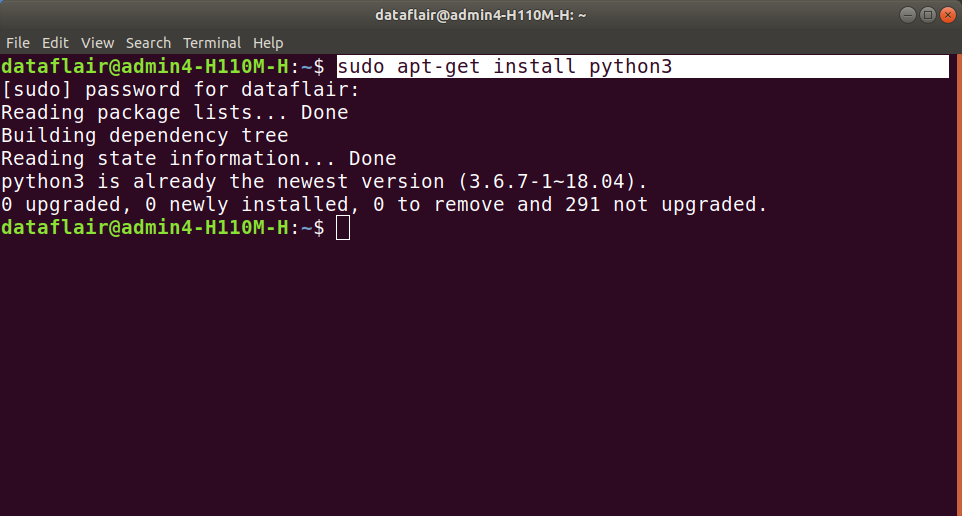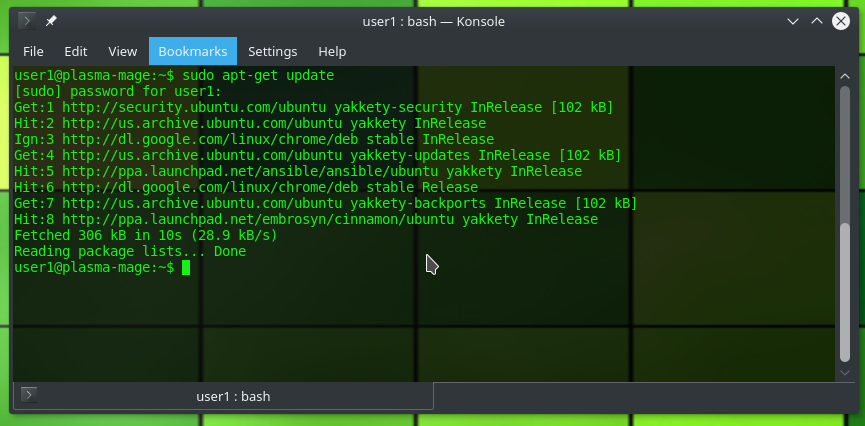

- #Differneces in sudo apt get update and upgrade install#
- #Differneces in sudo apt get update and upgrade upgrade#
- #Differneces in sudo apt get update and upgrade pro#
#Differneces in sudo apt get update and upgrade upgrade#
Can you use sudo apt-get dist-upgrade as your regular upgrade tool? Certainly. Apt-get dist-upgrade has a smart conflict resolution system, so it will attempt to upgrade the most important packages, at the expense of those deemed less important.Īpt-get upgrade does not remove packages, it only upgrades.
#Differneces in sudo apt get update and upgrade install#
However, when you run apt-get dist-upgrade, it will intelligently install or remove packages as needed, in order to complete the upgrade. When you run apt-get upgrade, it only upgrades that which has a new release available to the platform, as defined in /etc/apt/sources.list or in /etc/apt//. Let’s first look at the difference between apt-get upgrade and apt-get dist-upgrade (as that is where much of the confusion lies).
#Differneces in sudo apt get update and upgrade pro#
SEE: Choosing your Windows 7 exit strategy: Four options (Tech Pro Research) apt-get upgrade vs. Oracle Linux checklist: What to do after installation This Linux learning path will help you start using the OS like a proītop is a much-improved take on the Linux top command Open-source repository SourceHut to remove all cryptocurrency-related projects Confused? Open source: Must-read coverage Say what? Why are there three different paths to upgrading an operating system? Truth be told, each of those commands does different things. There’s an apt-get upgrade, apt-get dist-upgrade, and do-release-upgrade. You need to use apt-get dist-upgrade for upgrading the kernel version with apt-get command.How to upgrade a Debian-based Linux distribution–let me count the ways. The apt upgrade command can upgrade the Linux kernel version, apt-get upgrade cannot do that. However, the apt upgrade command does couple of things differently than its apt-get counterpart. apt upgrade vs apt-get upgradeīoth apt-get upgrade and apt upgrade commands install the newer version of the upgradable packages based on the data in the local package cache (refreshed by the update command). Let’s talk compare the upgrade option of both commands. Gnome-control-center-faces/jammy-updates,jammy-updates 1:41.7-0ubuntu0.22.04.4 all Gnome-control-center-data/jammy-updates,jammy-updates 1:41.7-0ubuntu0.22.04.4 all You can see the list of upgradable packages with apt but apt-get doesn’t have this option. Run 'apt list -upgradable' to see them.Īpt-get update doesn’t even tell you if any package can be upgraded. Hit:15 jammy InReleaseĦ packages can be upgraded. It tells you the number of packages that can be upgraded. However, apt update does one thing better than apt-get update. apt update vs apt-get updateīoth apt-get update and apt update do the same task of updating the local package cache so that your system is aware of the available package versions.

Let me focus on difference between the update and upgrade options of these commands. You can read this article to learn on the differences of apt and apt-get commands. apt is a newer and simpler version of apt-get. The apt-get command was the most popular of them all. There are many commands that interact with the APT package management apt-get, apt, dpkg, aptitude etc. apt or apt-get? Which one should you be using?ĭebian and Ubuntu use the APT package management system. Now that you understand how the combination update and upgrade works, let’s discuss the use of apt and apt-get. The sudo part lets you run commands as root in Ubuntu and Debian. And hence you use sudo with both commands. Since these are administrative commands, you need to run them as root. apt upgrade: upgrades packages to the new version.apt update: updates the package cache (to know which package versions can be installed or upgraded).


 0 kommentar(er)
0 kommentar(er)
